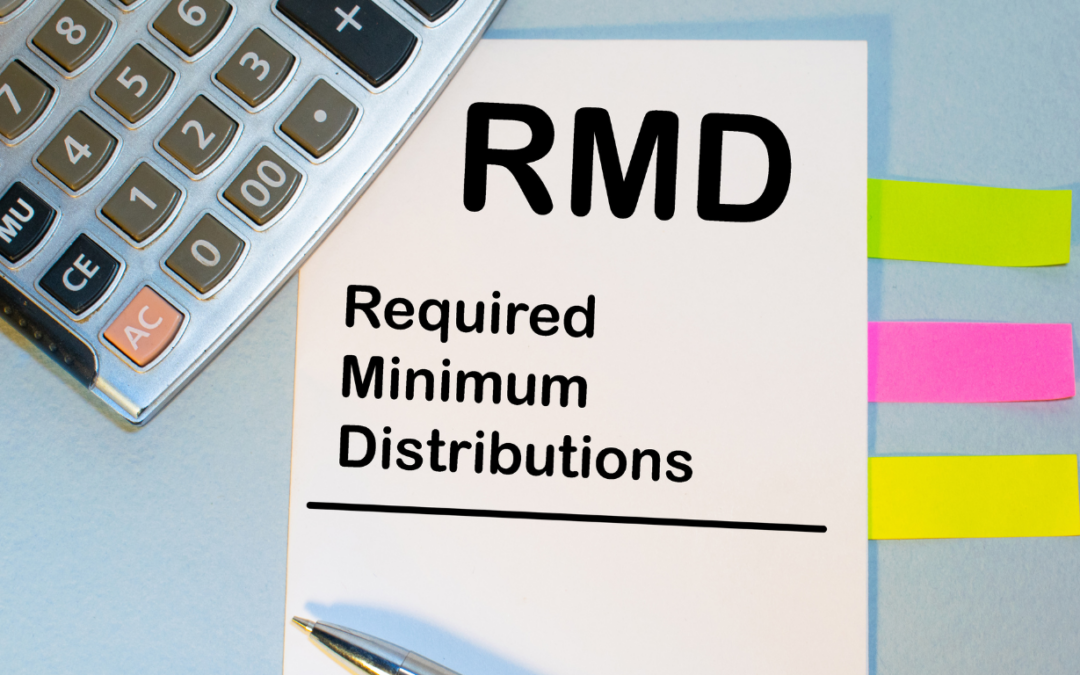
There’s a lot that goes into financial planning for retirement, from managing your various tax obligations to ensuring your income stream is sufficient to cover your needs. As you come up with a withdrawal strategy for your retirement accounts, keep in mind that the IRS requires taxpayers over 73 years old to make regularly scheduled withdrawals from their tax-deferred accounts in the form of required minimum distributions, otherwise known as RMDs.
Understanding what your distribution requirements will be over the course of your retirement can help ensure that you don’t find yourself on the hook for a substantial tax penalty. Further, coming up with a plan ahead of time can help you manage your tax liability and provide you with more options for allocating your required distributions. Learn more about what every retiree should know about RMDs.
What are RMDS for?
Many retirement accounts – like the majority of IRAs and 401(k)s – afford their owners tax-deferred investment growth. Contributions to these accounts are made on a pre-tax basis and the funds within them are allowed to grow tax-free until they’re withdrawn, at which point they’re subject to income taxes. By requiring minimum withdrawals, the IRS can ensure that investors eventually pay the taxes on these accounts.
Who are RMDs for?
The IRS mandates that individuals start taking RMDs from their retirement accounts once they’ve reached the age of 73. Thereafter, retirees must take RMDs each year, slowly drawing down their accounts over the course of their retirements. If you are over 73 but still working, you may be able to defer your RMDs until you actually retire. Generally speaking, tax-deferred and employer-sponsored accounts are subject to RMD treatment. Here are the accounts with RMDs:
- Traditional IRAs
- SEP IRAs
- SIMPLE IRAs
- 401(k) plans
- 403(b) plans
- 457(b) plans
- Profit sharing plans
* Note that RMDs do not apply to Roth IRAs.
How are RMDs Calculated?
The amount you must withdraw as part of your RMD is a function of your age and retirement account balance. To find your RMD, take your account’s year-end fair market value and divide it by the applicable distribution period. Your distribution period is a number prescribed by the IRS each year that’s meant to represent years of life expectancy. This means that as your age increases, the amount you must withdraw as part of your RMD also increases.
The IRS provides free worksheets to help retirees calculate their required minimum distributions, and these are updated each year to reflect changes in life expectancy. When it comes time to calculate your own RMD, be sure to consult with a financial or tax professional – or the IRS website – so that you have access to the most up-to-date resources and information.
Keep in mind that while you must make a minimum withdrawal, there’s nothing stopping you from withdrawing above that amount if you choose to. Also note that if you own more than one retirement account, you’re responsible for making RMDs from each one, and these amounts must be calculated separately.
What’s the Penalty for Missing an RMD?
If you miss the RMD deadline or forget to make one, you could face significant penalties. Failing to withdraw the required amount will result in you being taxed for 25% of the shortfall. For example, if your RMD is $6,000 but you only withdrawal $4,000, you’ll be forced to pay out $500 in tax penalties. However, if you missed the deadline for a reason the IRS deems legitimate, you may qualify for an extension on a case-by-case basis. Consult with a financial professional to determine if you qualify for an extension.
Make a Plan for Your RMDs?
RMDs can be a challenge to deal with, but they’re nonetheless an important consideration among retirees and those planning for retirement. Understanding how these required withdrawals work and how the minimums are calculated is essential to avoid triggering unexpected penalties. A financial advisor or tax professional can work with you to plan your RMDs and manage the associated tax implications.
To learn more about RMDs or how to manage your retirement tax burden, connect with us today.

